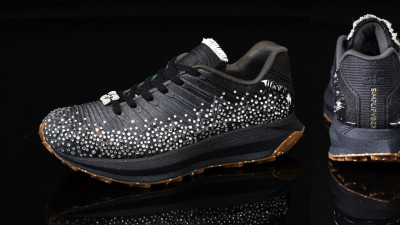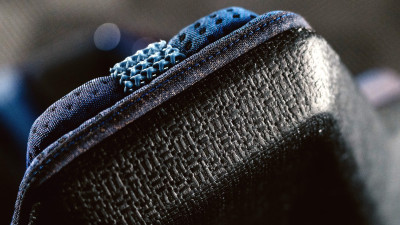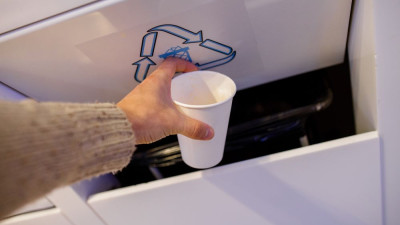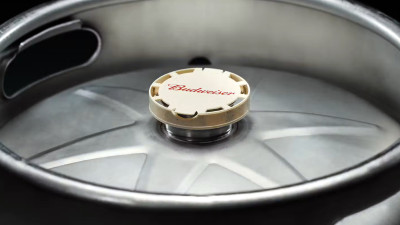Add sewage sludge and seaweed to the list of raw materials that have potential for circular economy solutions: Toyota is experimenting with converting human waste into hydrogen to fuel its Mirai hydrogen fuel cell car; and Wageningen Food & Biobased Research has been exploring seaweed’s potential for a range of products including fuels, bioplastics and animal feed, as well as opportunities for symbiosis for seaweed cultivation and byproduct use.
Trending:
Sewage Sludge, Seaweed Hold Promise for Fuel Innovation, Industrial Symbiosis
Add sewage sludge and seaweed to the list of raw materials that have potential for circular economy solutions: Toyota is experimenting with converting human waste into hydrogen to fuel its Mirai hydrogen fuel cell car; and Wageningen Food & Biobased Research has been exploring seaweed’s potential for a range of products including fuels, bioplastics and animal feed, as well as opportunities for symbiosis for seaweed cultivation and byproduct use.
Hydrogen fuel cell cars could help drastically reduce emissions, but big challenges remain in convincing people to buy them and establishing fuel station infrastructure. Toyota thinks it may have found a solution – the automaker is experimenting with converting human waste into hydrogen to fuel its Mirai hydrogen fuel cell car.
Like at many other wastewater treatment plants, the Fukuoka City Central Water Processing Plant in Japan separates sewage into liquid and solid waste. Most of the solid waste, called sewage sludge, is thrown into landfills, but in Fukuoka, microorganisms are added to the mix instead to break it down and create biogas that is about 60 percent methane and 40 percent carbon dioxide. Workers filter out the carbon dioxide and add water vapor, which creates hydrogen and more carbon dioxide. After extracting the carbon dioxide again, they are left with pure hydrogen.
This type of biogas plant is not new, and the Fukuoka plant currently produces about 300 kilograms of hydrogen per day. Yoshikazu Tanaka, chief engineer of the Toyota Mirai, told Quartz that this is enough to fuel 65 Mirai vehicles, and if all of the biogas produced by the plant were converted to hydrogen, that number would jump to 600 cars per day.
Eliminating all vehicles’ reliance on fossil fuels remains a long way off, but scaling the process across wastewater processing plants in the world’s biggest cities would certainly be a good start. Using wastewater is arguably the greenest way to make hydrogen, especially for big cities, where there are a lot of people who produce a lot of sewage, and most of that sewage, after it’s been treated, is discarded.
A ‘toilet-to-tank’ scheme could reduce the time it takes for hydrogen fuel cell cars to be appealing to more consumers, given that hydrogen refueling stations are far from commonplace.
Meanwhile, Wageningen Food & Biobased Research has been exploring seaweed’s potential as a raw material in the circular economy.
Seaweed is chock full of valuable minerals, proteins and sugars, but most cultivation currently focuses on creating hydrocolloids for foods such as sushi, salads and sweets or as a thickening agent, but other components are still being underused. Only about 25 percent of the seaweed is used in industrial hydrocolloid production, but Wageningen Food & Biobased Research and its research partners are investigating how to better use the whole product.
“The trick is to get the most from seaweed and link specific components to end products. Examples include a wide range of products, from food and animal feed to bioplastics, chemicals and fuels,” said Paulien Harmsen, a senior researcher at Wageningen Food & Biobased Research.
“Seaweed has an entirely different structure than ‘land plants,’” Harmsen added. “It demands specific biorefinery processes in which we try to use enzymes from the marine environment as much as possible as well as the least amount of chemicals. We use these processes to unlock the valuable components. Micro-organisms are then set to work via fermentation to convert these components into building blocks for products.”
Seaweed is both promising for the variety of uses it could have – current projects are researching possibilities for biofuels, energy, food, animal feed, and converting sugars from seaweed into lactic acid and polylactic acid (PLA), to name a few – and its ability to be cultivated at sea. Not only could this save on valuable agricultural land, but large-scale cultivation could be easily combined with offshore wind turbine parks and fish farming. The latter would also allow seaweed to extract effluents from the water and reduce the fish farm’s negative impacts.








